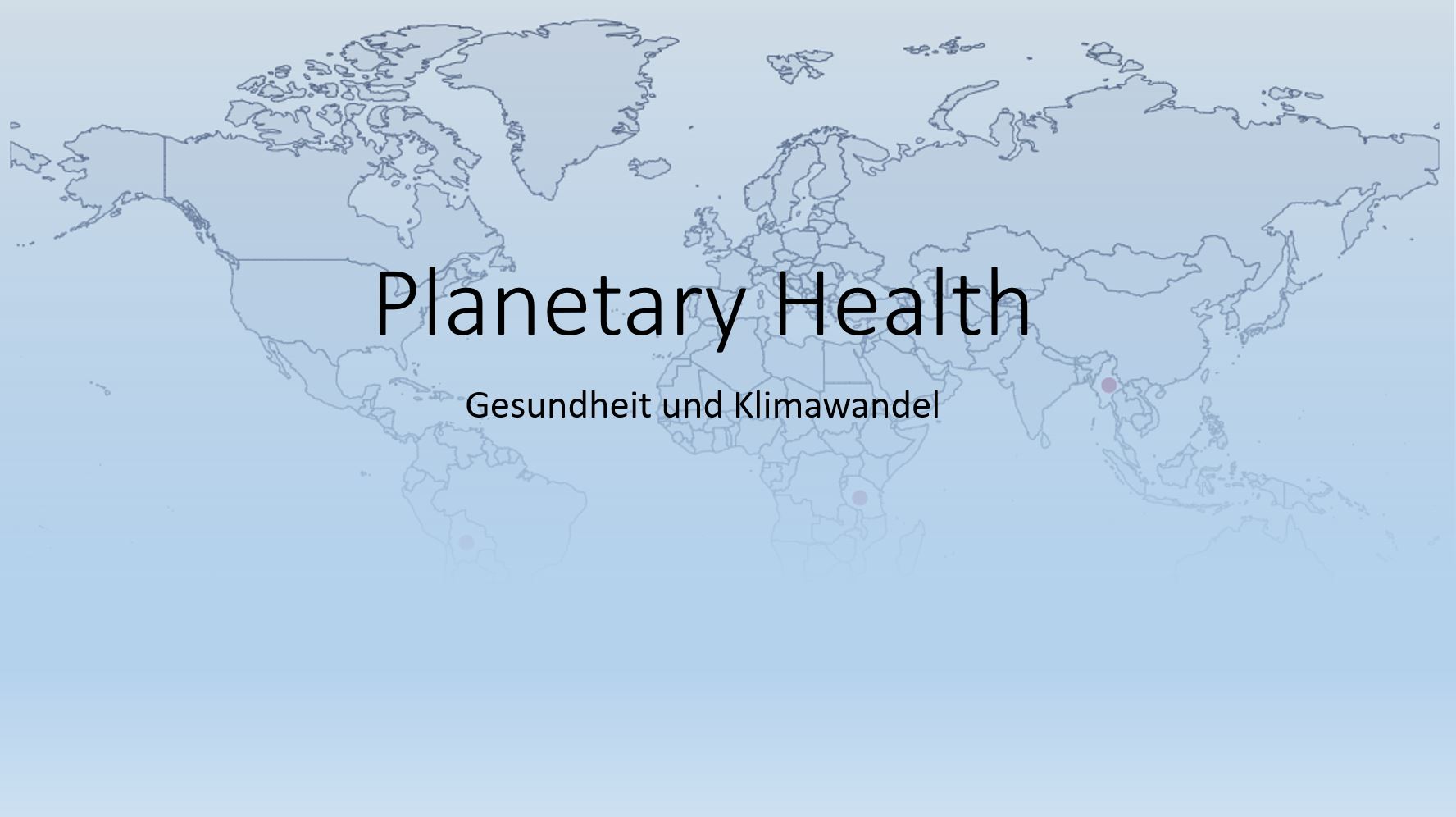How is it possible for as many happy and healthy people as possible to live on our earth?
This fundamental question was explored by international experts at a meeting in Canmore, Canada, in April 2018. The result was a Declaration of Principles for Planetary Health. It is in line with the 2030 Agenda for Sustainable Development and describes the urgent need to consider human health and planet Earth as inseparable.
It has long been undisputed that our current way of life has negative effects on our livelihood - the planet Earth - such as the destruction of ecosystems or a changing climate. In addition, changing leisure and consumption patterns in society worldwide are leading to health problems such as lack of exercise or malnutrition. Due to an increase in industrialisation and the associated air pollution, cardiovascular, lung and cancer diseases are on the rise. Studies have shown that the burning of fossil fuels alone causes about nine million premature deaths per year. Of these, 92 % are in developing and emerging countries.
With the recognition of the profound direct and indirect effects of global change on our health, the topic of climate and environmental protection has recently gained much importance in medicine. In 2015, the journal 'The Lancet' introduced the concept of Planetary Health and defined it as 'the interrelationships between human health and the political, economic, social and natural systems of our planet on which the existence of human civilisation depends' (Whitmee et al., 2015). At the aforementioned meeting in Canmore, the concept was consolidated through the Canmore Declaration (Prescott et al., 2018). Planetary Health not only describes the interaction between health and the environment. Rather, the aim is also to develop solutions to maintain the togetherness and interactions through a wide range of developments.
The complexity and the often astonishing and surprising interrelationships of the different ecosystems therefore require a high degree of transdisciplinary and international cooperation. Health problems in developing countries, such as an increase in pregnancy hypertension and pre-eclampsia in Bangladesh, could not be explained at first. Only at second glance was the connection between increased salinity in groundwater, caused by a rise in sea level, recognised (Schulz and Herrmann, 2021). The spread of malaria observed in many places, especially in sub-Saharan Africa, is also an indirect consequence of climate change: higher temperatures cause a spread of the Anopheles mosquito, which is the vector of the malaria pathogen Plasmodium.
A closer look at the medical sub-fields reveals that virtually every discipline is directly or indirectly affected by changing environmental conditions. In some fields, only specific population groups or regions are affected, while in others the same effects can be observed worldwide.
Of course, we in our project countries, Tanzania and Bolivia Myanmar Tanzania and Bolivia will not be spared from the changes and will have to cope with new challenges. And due to the mostly prevailing simple sanitary conditions and lack of medical care, it is assumed that especially developing countries will have to struggle with the consequences.
In order to take timely measures and prevent negative consequences, it is essential to have a sound knowledge of the connections between health and the environment. International studies with interdisciplinary working groups provide essential contributions to this. On the other hand, it is also of central importance to set up the health system in these countries in the best possible way. In this context, the training of specialised personnel and the provision of medical equipment are just as important as a functioning power supply and IT systems. Projects that support this kind of work are therefore instrumental in preventive care.
In the coming months, we will highlight the various medical disciplines in the context of climate change. This will not only focus on the health problems, but also explain how the individual fields can make their contribution to climate protection. In addition, we will present projects that are leading the way through innovative approaches to create an earth on which as many happy and healthy people as possible live.
Prescott, S.L. et al. (2015): The Canmore Declaration: Statement of Principles for Planetary Health. Challenges 2018, 9, 31. https://doi.org/10.3390/challe9020031.
Schulz, C., and Herrmann, M. (2021): Planetary Health. In: Schulz et al [eds]. Planetary Health. Climate, environment and health in the Anthopocene. Medizinisch Wissenschaftliche Verlagsgesellschaft, 2021, Berlin. ISBN: 3954666502
Whitemee, S. et al. (2015): Safeguarding human health in the Anthropocene epoch: report of The Rockefeller Foundation-Lancet Commission on planetary health. Volume 386, ISSUE 10007, DOI:https://doi.org/10.1016/S0140-6736(15)60901-1



